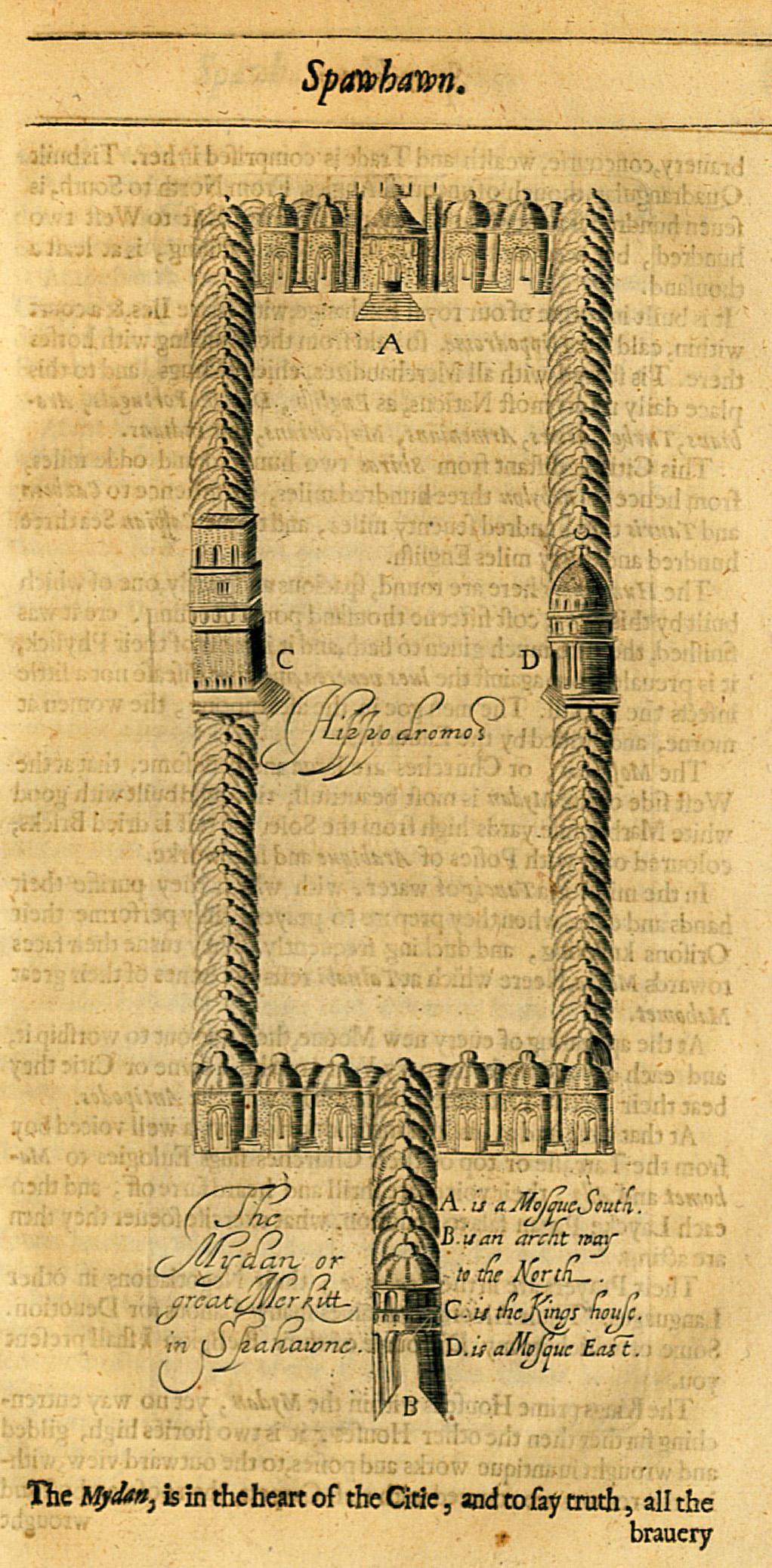In his 1634 and 1638 editions, Herbert does not seem to notice that his illustration of the maydan shows “a Mosque East” on the western side[1]. He captions the image: “Take the outside of this brave Fabrick [sic] well presented”[2].
By 1665, he is more circumspect:
“The outside of this noble Burse has this form, so well as my memory would serve; for I must acknowledge, I forgot to take the draught [sic] during my being upon the place, in which I am blameworthy”[3].
This minor issue, however, pales into insignificance compared to other variations between Herbert’s first and later editions. These include differences in tone as well as in how much is written about the city. In 1634, in his five-page Description of Spawhawn [Isfahan], Herbert seems unimpressed with the town:
“But he that wrote… that [Isfahan] was and is the most stately citie in the Orient… I cannot believe him, for I… could see no such strengthe, bulke or rareness in her”[4].
In 1638, he not only devotes twice as much descriptive text to the town[5] but is also much more enthusiastic:
“Spahawn .. the Metropolis of the Persian Monarchy; yea the greatest and best built City throughout the Orient”[6].
[1] And “The Kings House” (actually the Ali Qapu) wrongly on the East. The Qaysariyya is described as “an archt [architectural] way to the North”. The southward orientation of the engraving in the book makes this error especially difficult to see, but Herbert specifically says in the text that the mosque is to the west. TH 1634, 86.
[2] TH 1638, 157.
[3] TH 1665, 171. I think, from the increasing faintness of the otherwise equivalent image, that the several editions must have (cost-effectively) re-used the same engraving and wonder if the caveats were made in full knowledge of the inconsistency.
[4] TH 1634, 83.
[5] “if I seem prolix, impute it to my desire to give you everything usefull and observable”. TH 1638, 153
[6] TH 1638, 153. The 1665 edition retrenched slightly: “Spahawn, the Metropolis of this great Kingdom, yea [is] not inferior to the greatest and best built City throughout the Orient” TH 1665, 168.
